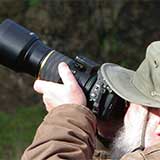Tillamook Coast Life Blog
Bird Migration around the Tillamook Coast
Some surprising visitors: bird migration
The main northward push of shorebird migration on the Tillamook Coast is in May each year. The main migrants include Whimbrels, tiny Western Sandpipers moving through by the thousands, slightly largerDunlins adorned with reddish backs and a black belly patch, Semipalmated Plovers with a single black breastband, and Black-bellied Plovers. Rarer migrants include Red Knots, Pacific Golden-Plovers, Black-bellied Plovers, Marbled Godwits, and Long-billed Curlews.
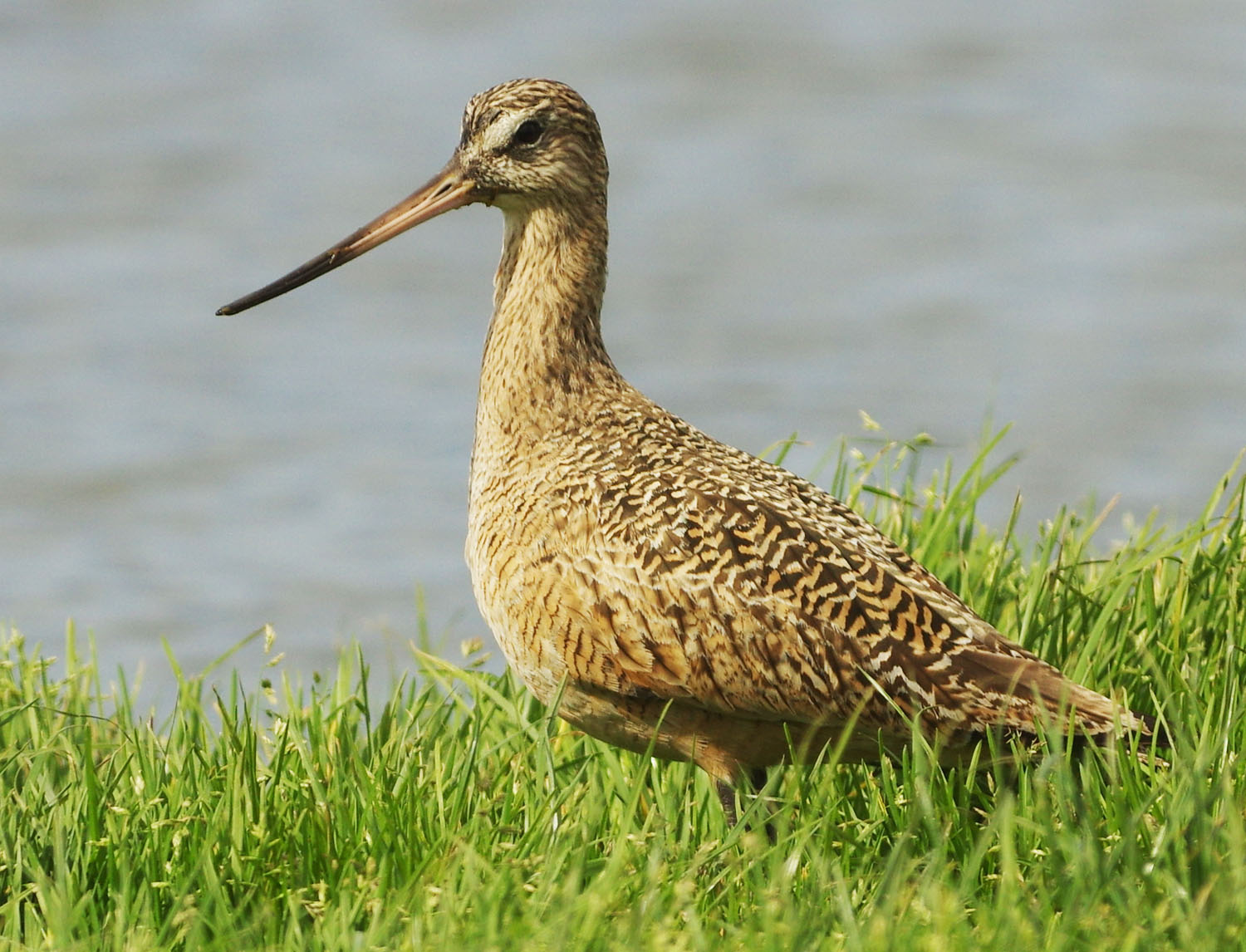
Curlew, but note the bill curves up rather than down.
These migrants are often found in Tillamook County estuaries, and sometimes in wet pastures, but the bulk of them move up the outer beaches. In Tillamook County, the best beaches for migrating birds are at Neskowin, Robert Straub State Park at Pacific City, Netarts Spit in Cape Lookout State Park, Bayocean Spit, Barview Jetty past Rockaway Beach and Manhattan Beach, and Nehalem Spit in Nehalem Bay State Park.
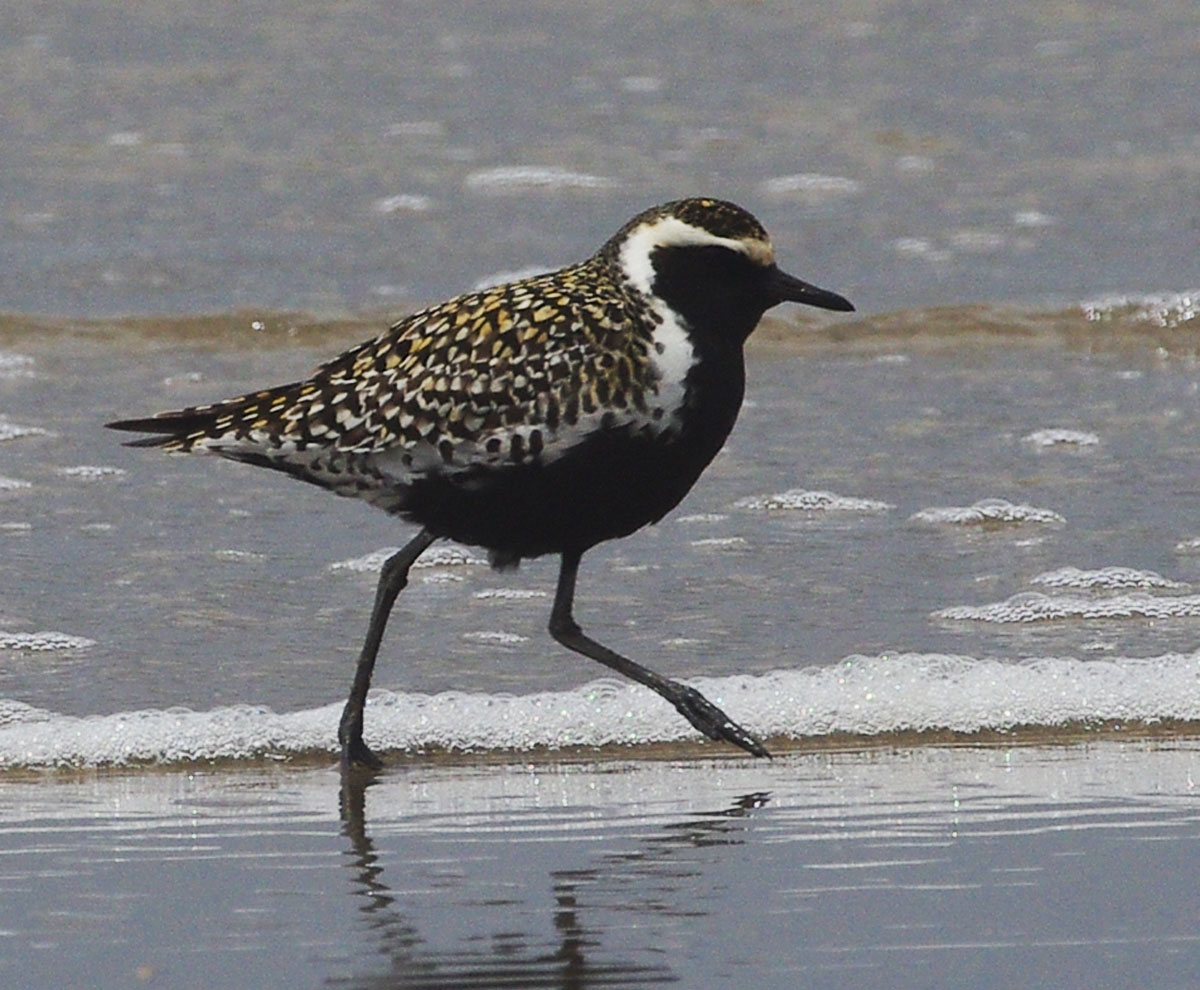
winter on islands all over the tropical Pacific. A few migrate up and down the west
coast.
On these beaches the birds feed on invertebrate life living on the sand. The largest birds, the Whimbrels and godwits, feed extensively on adult Mole Crabs. Smaller shorebirds feed on immature Mole Crabs, small worms that burrow in the sand, and sand fleas (amphipods). These food sources tend to be patchy, so the bids hunt up and down the beaches. The best patches are likely to be visited over and over, so locating those will help you to find the birds more easily.
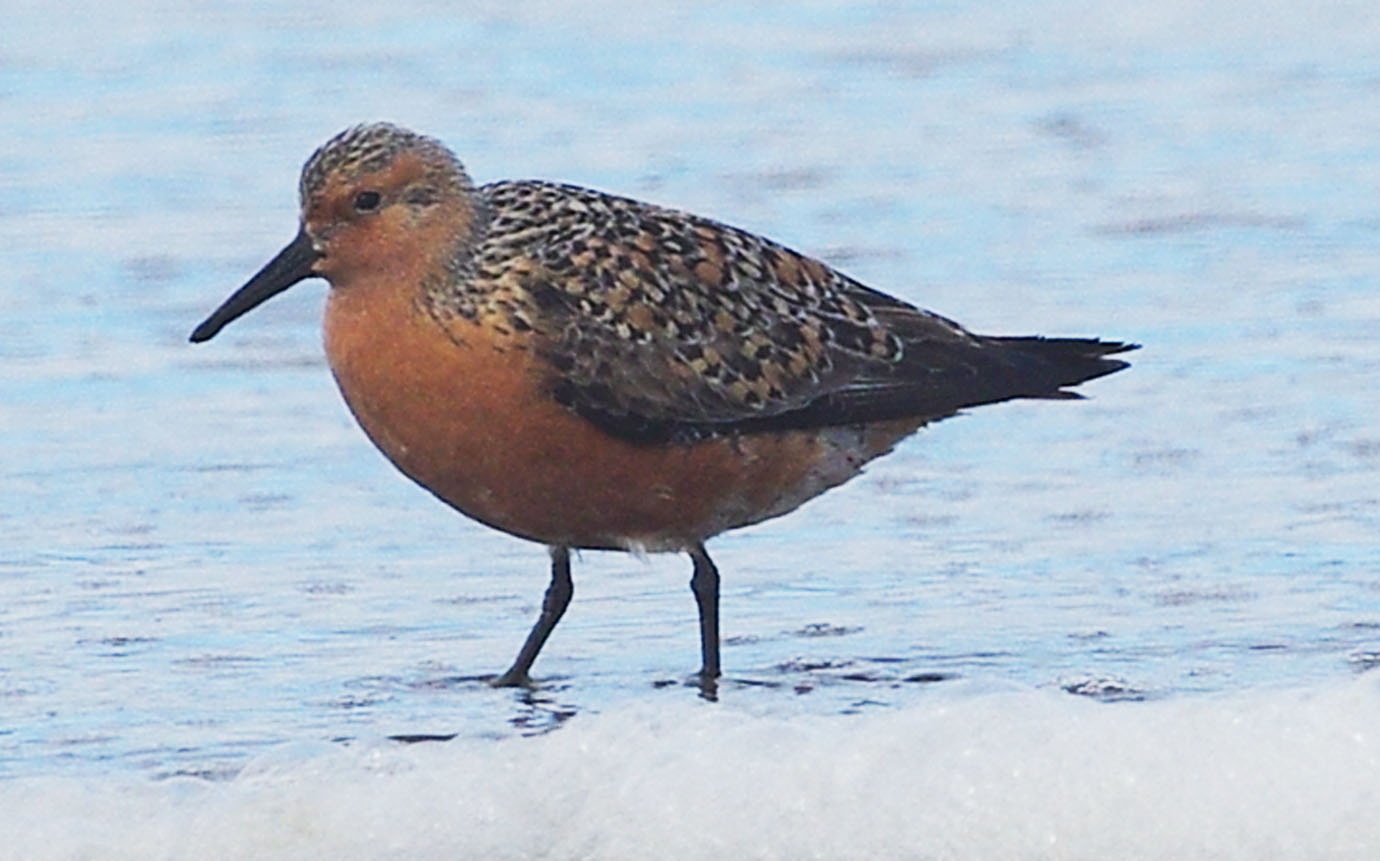
Pacific population stages at Humboldt Bay in California, then flies directly to Willipa
Bay in Washington.
Most of these birds are heading for the arctic tundra, where they breed. The breeding season is very short, but because arctic summer days are long and food (insects and other invertebrates) is abundant, they can manage to pair up, mate, lay and incubate eggs. Typically birds will raise a brood of young in less than three months. Timing is critical: arrive too soon and the weather is likely bad, and food is not yet available. Arrive too late and the season likely will end before the young are fully grown and ready to migrate. So, to hit this window just right, the birds are traveling up the Oregon coast mainly in May with some delayed into June.
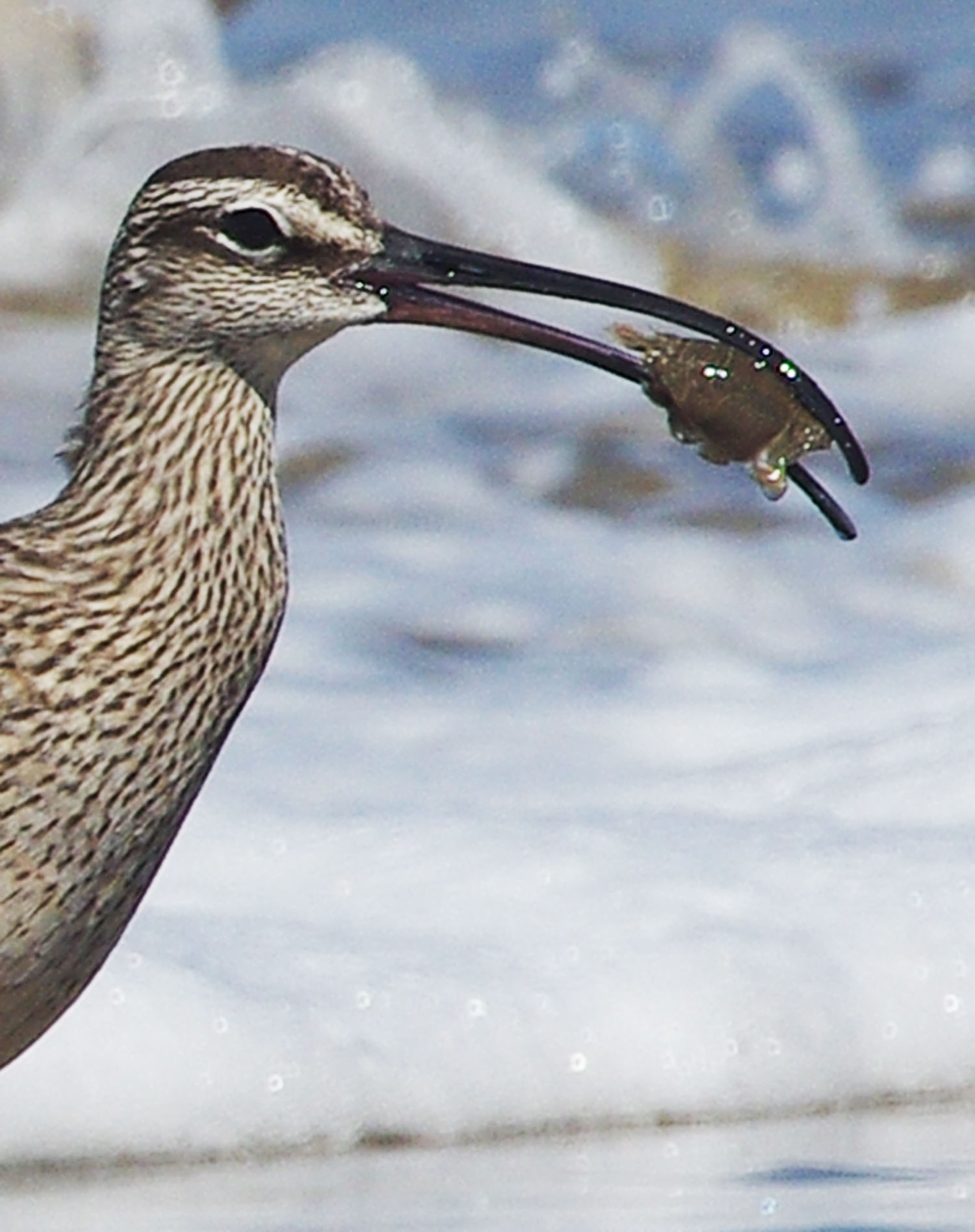
Special birds:
Bar-tailed Godwits are smaller relatives of the Marbled Godwits with the same slightly upturned bills, but in breeding plumage with reddish faces and chests. They have recently become famous for their incredible migratory flights. They migrate from breeding areas in western Alaska to wintering grounds in New Zealand: distances of over 7000 miles.
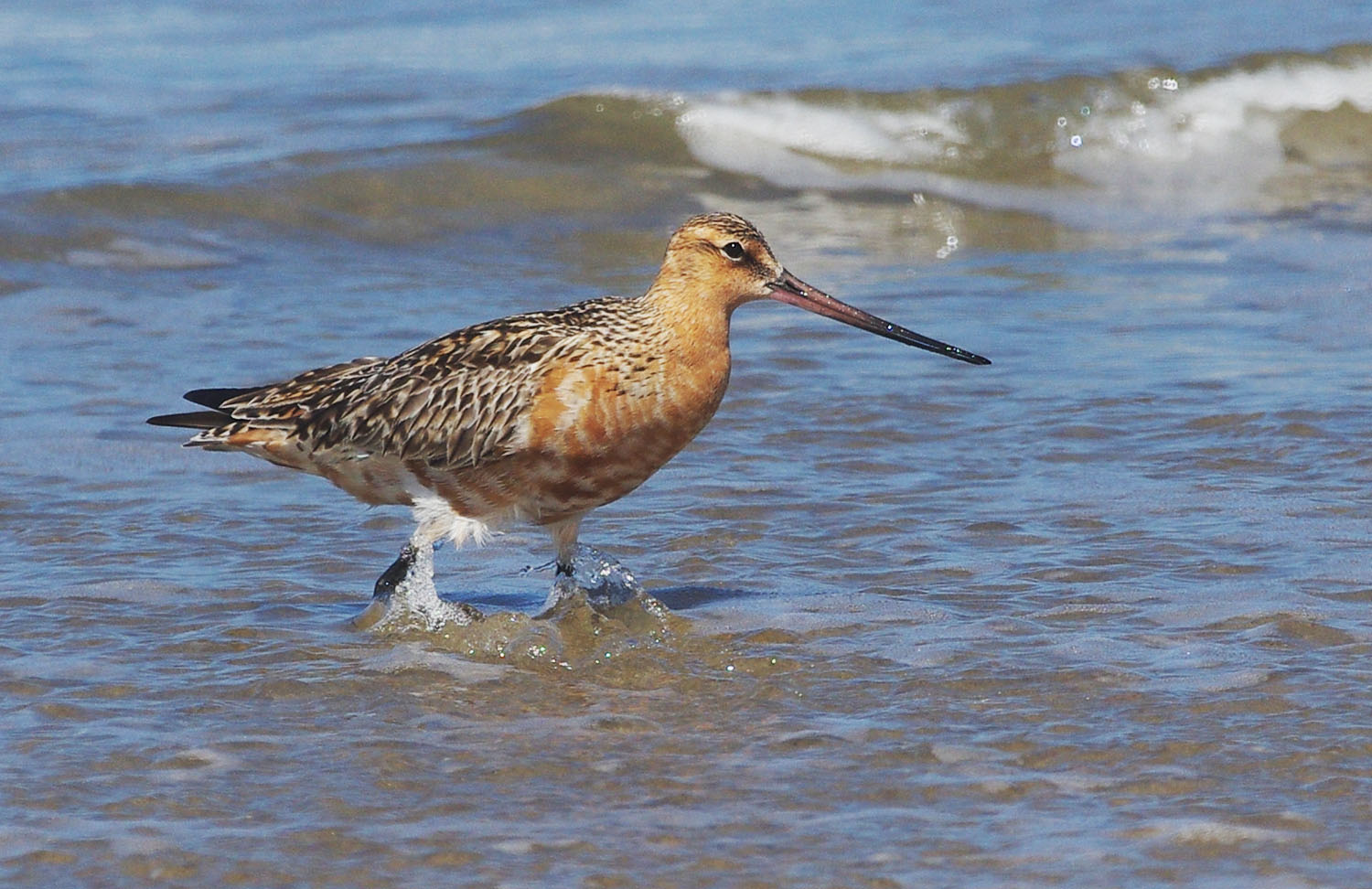
its normal migratory path in the western Pacific.
The first one tracked by satellite transmitter took nine days of continuous flapping flight without food or water. Bar-tailed Godwits are rare vagrants to the Oregon coast primarily in fall, but this spring some north-bound migrants ran into strong westerly winds and were blown east. They are flocking with the Whimbrels, so to look for them, locate Whimbrel flocks and pick through them for the slightly smaller birds with upturned bills, reddish underparts and faces, and a silvery cast to the upper wing surface. One bird that has been working the beaches near Waldport is carrying a series of color bands, which demonstrate that it was banded in New Zealand.

